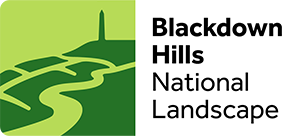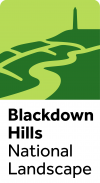Spring watch on the Stockland Turbaries 2020
Now that we are all incarcerated to avoid the dreaded Coronavirus, the natural world around us is flourishing. After a mild but long, very wet winter, spring has come early on our Turbaries. Chiffchaffs were singing at Quantock on 12 March (which is three days earlier than my long-term average) and blackcaps were heard here on 25 March. Geoff Pearce reports a remarkably early start to the tawny owl breeding season, with one box with eggs in February on Bucehayes Common. Other broods are underway in nest-boxes on Shore Bottom and Quantock. Dippers also seem to be having a good season, as judged by nest-box occupancy on the Umborne, Corry and Yarty.
Simon Stow reports having seen a swallow on 1 April, and brook lampreys are running on the Corry Brook. They are like wormy eels but unrelated; they are not fish but belong to a primitive group, the cyclostomes or roundmouths, that have no real backbone. Henry I is said to have died from eating a surfeit of lampreys.
Sunny days have been bringing out over-wintered adult butterflies including peacock, brimstone and comma, but today a newly hatched holly blue and a female orange-tip (that lacks the conspicuous orange of the male) appeared at Quantock, by my reckoning also very early.
Wild daffodils and primroses seem especially prolific this year. The very first bluebells are appearing and the beautifully delicate wood anemones are now adorning stream banks and woodland rides. I see there are leaf rosettes of the early purple orchid on the ridge route on Horner Hill, together with moschatel, an inconspicuous but charming little plant that smells faintly of musk and whose flowers are arranged like the faces of a cube, giving it its other name, ‘townhall clock’.
During the winter, the parish council hired contractors (the RSPB again) to clear scrub regrowth from the north-east corner of Bucehayes as well as brush-cutting fire-breaks on Horner Hill. We expect to be able soon to use moorland ponies again to summer graze five of our enclosures.
All four Higher Level Stewardships have now come to the end of the initial ten-year agreements with Natural England, each now with a year’s extension. We contemplate a woodland management
plan.
Current circumstances allowing, volunteer work for the summer will once again include bouts of balsam bashing on Shore Bottom on Saturdays, meeting at Mount Pleasant Farm at 10 am, on 20 June, 11 and 25 July, and 8 August. Come and join us if you can!
If any of you have observations or records that you’d like to share with us for future editions, please let me know!






